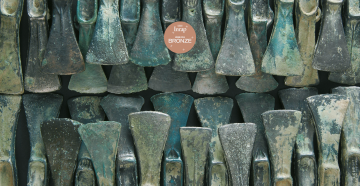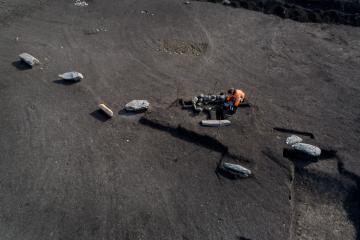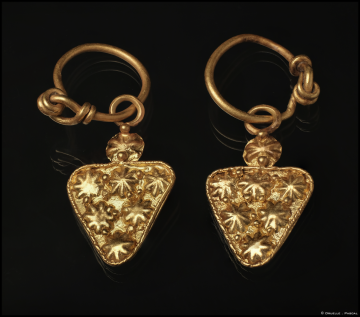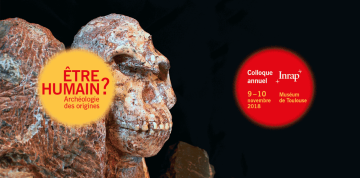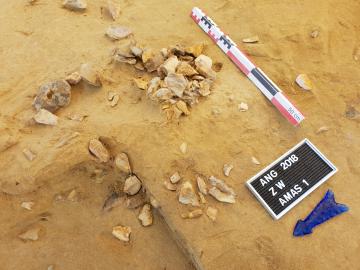You are here
News
The institut national de recherches archéologiques préventives (national institute for preventive archaeological research) is dedicating its ninth scientific and cultural season to the Bronze Age. Long relegated to an obscure period of Protohistory, it has revealed its true face under the spotlight of preventive archaeology: that of metallurgy, which saw agricultural societies engage in commercial exchanges throughout Europe and access an early form of complex economy. Throughout 2025, Inrap and its partners are getting into the Bronze Age with a rich program of cultural and scientific events.
The prehistoric site of Renancourt, in Amiens, has been known for many years and long remained one of the few sites providing evidence for human presence in northern France during the Early Upper Paleolithic (35,000 – 15,000). Discovered in 2011, during an Inrap diagnostic operation, the site of Amiens-Renancourt 1 has been under full excavation since 2014. During the 2019 season, an exceptional Gravettian “Venus,” some 23,000-years-old, was discovered.
At the gates of Narbonne, an Antique necropolis is currently under excavation by an Inrap team, as prescribed by the State (Drac Occitanie), prior to the construction of a Zac. Due to its importance and its exceptional state of preservation, this site is a major discovery for French archaeology and benefits from significant funding from the government (State, Occitanie region, Aude department, Grand Narbonne agglomeration, city of Narbonne) and the project developer (Alenis, Grand Narbonne development company).
An Inrap team has recently excavated a group of aligned menhirs at Veyre-Monton (Puy-de-Dôme). This research, prescribed by the State (Drac Auvergne – Rhône- Alpes), was conducted in the context of construction work by the APRR society to widen the A75 motorway. This is the first time such alignments, cairns and statuemenhirs have been discovered in Auvergne or, more broadly, in central France.
A team of Inrap archaeologists is currently excavating an Etruscan tomb in Aleria-Lamajone (Corsica). This excavation, curated by the State (DRAC Corsica), first uncovered two road sections and an Etruscan and Romain necropolis. The discovery of a hypogeum—an underground burial chamber dug into the rock—led to a prescription for further excavation. This unusual research undertaken by the State contributes to our knowledge of Etruscan funerary practices, the Antique occupation of Corsica, and the diversity of its exchanges with the Mediterranean world.
Following the ARIADNE project, ARIADNEplus has just been selected by the European Commission for 4 years. The objectives is to develop the existing European archaeological data infrastructure, its user community and its innovative services. Inrap is the main French partner of this major project for archaeological research.
International conference, Friday 9 and Saturday 10 November 2018, at the Muséum de Toulouse.
This excavation, conducted since the month of April by team of Inrap archaeologists, has revealed three prehistoric occupations dated from the Final Paleolithic to the Mesolithic, as well as a rare sedimentary sequence.


